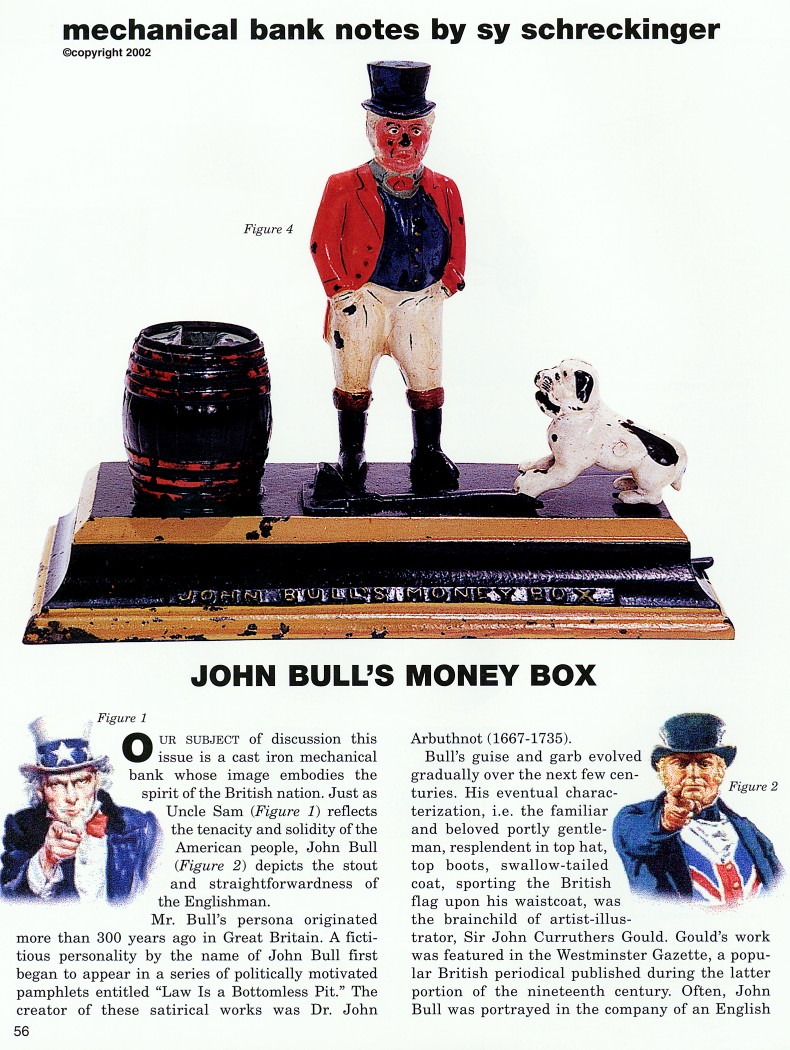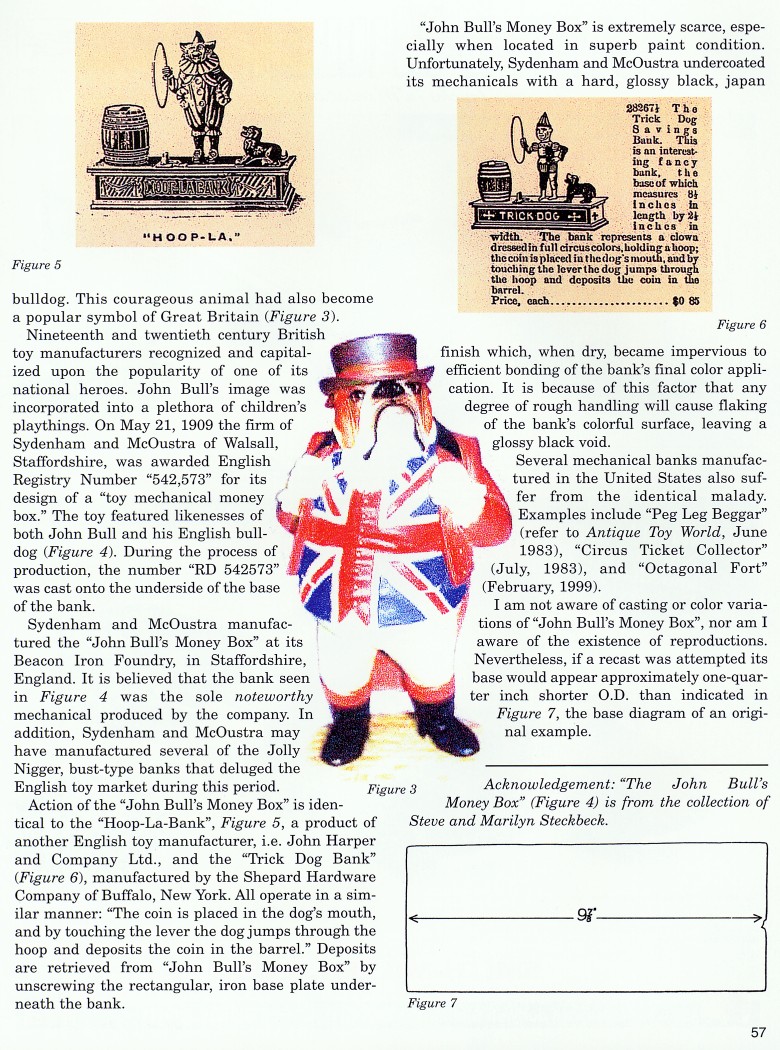|
John Bull's Money Box
by Sy Schreckinger – ANTIQUE TOY WORLD Magazine – January, 2002
Our subject of discussion this issue is a cast
iron mechanical bank whose image embodies the spirit of the British
nation. Just as Uncle Sam (Figure 1) reflects the tenacity and solidity of
the American people, John Bull (Figure 2) depicts the stout and
straightforwardness of the Englishman.
Mr. Bull's persona originated more than 300 years ago in Great
Britain. A fictitious personality by the name of John Bull first began to
appear in a series of politically motivated pamphlets entitled "Law Is a
Bottomless Pit." The creator of these satirical works was Dr. John
Arbuthnot (1667-1735).
Bull's guise and garb evolved gradually over the next few centuries.
His eventual characterization, i.e. the familiar and beloved portly
gentleman, resplendent in top hat, top boots, swallow-tailed coat,
sporting the British flag upon his waistcoat, was the brainchild of
artist-illustrator, Sir John Curruthers Gould. Gould's work was featured
in the Westminster Gazette, a popular British periodical published during
the latter portion of the nineteenth century. Often, John Bull was
portrayed in the company of an English bulldog. This courageous animal had
also become a popular symbol of Great Britain (Figure 3).
Nineteenth and twentieth century British toy manufacturers recognized
and capitalized upon the popularity of one of its national heroes. John
Bull's image was incorporated into a plethora of children's playthings. On
May 21, 1909 the firm of Sydenham and McOustra of Walsall, Staffordshire,
was awarded English Registry Number "542,573" for its design of a "toy
mechanical money box." The toy featured likenesses of both John Bull and
his English bulldog (Figure 4). During the process of production, the
number "RD 542573" was cast onto the underside of the base of the bank.
Sydenham and McOustra manufactured the "John Bull's Money Box" at its
Beacon Iron Foundry, in Staffordshire, England. It is believed that the
bank seen in Figure 4 was the sole noteworthy mechanical produced by the
company. In addition, Sydenham and McOustra may have manufactured several
of the Jolly Nigger, bust-type banks that deluged the English toy market
during this period.
Action of the "John Bull's Money Box" is identical to the
"Hoop-La-Bank", Figure 5, a product of another English toy manufacturer,
i.e. John Harper and Company Ltd., and the "Trick Dog Bank" (Figure 6),
manufactured by the Shepard Hardware Company of Buffalo, New York. All
operate in a similar manner: "The coin is placed in the dog's mouth, and
by touching the lever the dog jumps through the hoop and deposits the coin
in the barrel." Deposits are retrieved from "John Bull's Money Box" by
unscrewing the rectangular, iron base plate underneath the bank.
"John Bull's Money Box" is extremely scarce, especially when located
in superb paint condition. Unfortunately, Sydenham and McOustra
undercoated its mechanicals with a hard, glossy black, japan finish which,
when dry, became impervious to efficient bonding of the bank's final color
application. It is because of this factor that any degree of rough
handling will cause flaking of the bank's colorful surface, leaving a
glossy black void.
Several mechanical banks manufactured in the United States also
suffer from the identical malady. Examples include "Peg Leg Beggar" (refer
to Antique Toy World,
June 1983), "Circus Ticket Collector" (July, 1983),
and "Octagonal Fort" (February, 1999).
I am not aware of casting or color variations of "John Bull's Money
Box", nor am I aware of the existence of reproductions. Nevertheless, if a
recast was attempted its base would appear approximately one-quarter inch
shorter O.D. than indicated in Figure 7, the base diagram of an original
example.
Acknowledgement: "The John Bull's Money Box" (Figure 4) is from the
collection of Steve and Marilyn Steckbeck.
|


